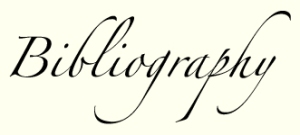 Dear Scholars! I need your help again. What follows reflects an attempt to compile a complete list of works by the four major Inklings that have at least some tangential connection with the legends of Arthur, the Knights of the Round Table, or the Quest or the Holy Grail. These are not complete bibliographical citations. Instead, they are short descriptions of the nature of each work. The purpose of this list is to give readers an idea of how many Arthurian works, of what sorts, each Inkling composed.
Dear Scholars! I need your help again. What follows reflects an attempt to compile a complete list of works by the four major Inklings that have at least some tangential connection with the legends of Arthur, the Knights of the Round Table, or the Quest or the Holy Grail. These are not complete bibliographical citations. Instead, they are short descriptions of the nature of each work. The purpose of this list is to give readers an idea of how many Arthurian works, of what sorts, each Inkling composed.
Would you be willing to check any part of this list, whatever your area of expertise, and offer additions, suggestions, corrections, critiques, and commentary? That would be very helpful! Thank you. 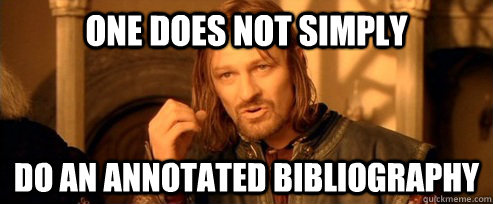
Owen Barfield
1947. The “Mark and Tristram” letters. Comedic correspondence between Barfield and Lewis. 11 June to 20 June 1947.
1930s? 40s? The Quest of Sangreal. A sixteen-page adaptation of Grail episodes from Chrétien and Malory. It is a work of Eurythmia, composed for use at the London School of Eurythmics. It remains unpublished and is in the Bodleian library. The date is unknown.
1930s? 40s? Annotations in Sir Thomas Malory’s Morte d’Arthur. This is a copy of the Everyman’s Library edition that was originally published in 1906 and reprinted in 1934 (volume two) and 1935 (volume one). The exact dates of Barfield’s notes and annotations are unknown but probably predate Vinaver’s 1947 edition of the Winchester MS of Malory.
1975. Night Operation. A dystopian novella whose plot is a “Grail” story. 1975.
J. R. R. Tolkien
1925. Sir Gawain & The Green Knight. An edition of the fourteenth-century Middle English poem that Tolkien edited with his colleague E. V. Gordon.
1930s? The Fall of Arthur. An unfinished poem in alliterative meter. Published posthumously.
1930. “The Lay of Aotrou and Itroun.” A poem set in Broceliande. Written in 1930 and published in 1945.
1950s. Sir Gawain and the Green Knight. Tolkien’s translation, written in the early 1950s and broadcast by the BBC in 1953. Published posthumously.
1926? Beowulf: A Translation and Commentary together with Sellic Spell. Throughout the commentary, Tolkien compares Hrothgar’s court at Heorot with Arthur’s court at Camelot. Published posthumously.
C. S. Lewis
1915-1916. Letters to Arthur Greeves, whom he calls “Galahad.” CL.
1916. “The Quest of Bleheris.” An Arthurian prose tale sent to Arthur Greeves. It remains unpublished and is in the Bodleian library.
1919. “Victory,” a poem in Spirits in Bondage.
* dates of composition? A lost poem, possibly entitled “Decadence,” “Retreat,” or “Venusberg” (See King, “Lost but Found,” and Christopher, “C. S. Lewis’s Lost Arthurian Poem).
1930s? “Launcelot.” NP.
1935. “The Alliterative Metre.” This essay makes reference to an “alliterative poem” by Tolkien, which JRRT said was probably The Fall of Arthur. Reh and SLE.
1936. The Allegory of Love: A Study in Medieval Tradition. An academic analysis of the courtly love tradition and chivalry. Includes chapters on Chrétien and The Faerie Queene, and lots of discussion of the “matter of Britain.” Argues that “in the hands of a great poet, the Arthurian story, treated in terms of courtly love, produced the first notable examples of psychological or ‘sentimental’ fiction.”
1941. “On reading The Faerie Queene.” Essay. MRL.
1942. “Psycho-Analysis and Literary Criticism.” Essay. In a discussion of Jungian archetypes, Lewis mentions that he is one of those who have discovered “behind the Arthurian stones some far off echo of real happenings in the thick darkness of British history.” SLE.
1944. “Is English Doomed?” Essay. Contains a few references to Launcelot. PCon.
1945. That Hideous Strength. Final novel of the Ransom cycle.
1945. “Addison.” Essay. Contains some discussion of the culture of courtesy in Sir Gawain and the Green Knight. SLE.
1945. “The Funeral of a Great Myth.” Essay. Puts the death of Arthur in the context of grand, tragic endings in many myths. CRf.
1947. “The Morte darthur.” Review of Vinaver. MRL.
1947. The “Mark and Tristram” letters. Comedic correspondence between Barfield and Lewis. 11 June to 20 June 1947.
1950. “The Literary Impact of the Authorised Version.” Essay. distinguishes between a “source” and an “influence” and discussed Malory as source and influence for Tennyson. AfP and SLE.
1940. “The Necessity of Chivalry.” Essay. Comparison of Malory and modern times. PCon.
1940. “Why I am Not a Pacifist.” Talk given to a pacifist society in Oxford. WG, TH, CpR.
1948. “Williams and the Arthuriad.” Commentary on CW’s TTL and RSS. AT.
1952. “Hero and Leander.” Essay. Talks about the composite nature of Malory. SLE.
1954. English Literature in the Sixteenth Century (Excluding Drama). Lewis’s most exhaustive academic work, it includes a sizable section on Sidney and Spenser.
1954. “Edmund Spenser, 1552-99.” Essay. MRL.
1954. “The Gods Return to Earth.” Review of The Fellowship of the Ring. Reprinted as “Tolkien’s The Lord of the Rings.” Comparison of JRRT’s feeling of great depth and work behind it to Malory.
1965. “Imagination and Thought in the Middle Ages.” Two-part lecture series. MRL.
1961. “Neoplatonism in the Poetry of Spenser.” Review essay. MRL.
1962. “The Anthropological Approach.” Essay. Uses Gawain and the Grail as examples of the uselessness of some anthropological “explanations” of literary phenomenon. SLE.
1963. “The English Prose Morte.” Essay. I&I.
1964. The Discarded Image: An Introduction to Medieval and Renaissance Literature. Lectures, published posthumously.
1967. Spenser’s Images of Life. Lecture notes compiled by Alistair Fowler and published posthumously.
*date of composition? “Spenser’s Cruel Cupid.” Essay. MRL.
*date of composition? “Modern Theology and Biblical Criticism,” also called “Fern Seeds and Elephants.” Essay. One brief reference: “We may without disgrace believe in a historical Arthur.” CRf, FSE.
*date of composition? “On Science Fiction.” Essay. Includes “some of Malory (but none of Malory’s best work)” in the “marvelous” category of science fiction. OW, TOW.
*date of composition? “The Genesis of a Medieval Book.” Essay. MRL.
*date of composition? “De Audiendis Poetis.” *comments? Essay. MRL.
Charles Williams
1912-1916? 1923? The Arthurian Commonplace Book. A scrapbook of notes and clippings relating to the Matter of Britain, especially the Grail. It remains unpublished and is in the Bodleian library.
1927. The Masque of the Manuscript.
1929. The Masque of Perusal.
1929. The Rite of the Passion.
1930. The Masque of the Termination of Copyright.
1930. Heroes and Kings. A collection of poetry. Arthurian poems in this volume: “Tristram’s Song to Iseult,” “Palmonides’s Song to Iseult,” “Lamoracke’s Song to Morgause,” “Percivale’s Song to Blanchfleur,” “A Song of Palomides,” “Taliessin’s Song of a Princess of Byzantium,” “The Song of the Riding of Galahad.”
1931. Lascelles Abercrombie published an anthology entitled New English Poems: A Miscellany of Contemporary Verse Never Before Published. Arthurian poems by Williams in this anthology: “Percivale’s Song” and “Taliessin’s Song of Lancelot’s Mass. 340-346.
1931. Three Plays. Arthurian poems interspersed between the play in this volume: “Taliessin’s Song of Logres,” “Taliessin’s Song of Byzantium,” “Taliessin’s Song of the King’s Crowning,” “Taliessin’s Song of the Setting of Galahad in the King’s Bed.”
1938. Taliessin Through Logres. A volume of twenty-four Arthurian poems.
1938. Four poems published in Christendom 8 (in March). “Prelude,” “Taliessin’s Return to Logres,” “The Vision of Empire,” and “The Calling of Arthur.” 19-30.
1939. “The poem Divites Dimisit,” an early version of “The Prayers of the Pope,” was published in Theology 39 (December). 421-424.
1940. Phyllis Jones edited an anthology entitled Modern Verse. “The Coming of Palomides” is included.
1941. The poem “Taliessin in the Rose Garden” is published in the Dublin Review 208 (January). 82-86.
1941. The poem “Dinadan’s Song” is published in Time and Tide 22 (March 15). 210.
1941. The article “Charles Williams on Taliessin Through Logres” appears in Poetry Review 32 (March/April). 77-81.
1942. The poem “The Queen’s Servant” is published in Poetry 2. 38-41.
1944. The Region of the Summer Stars. A volume of eight Arthurian poems.
1944. The article “Malory and the Grail Legend” appears in the Dublin Review 214 (April). 144-153
1948. Arthurian Torso: Containing the Posthumous Fragment of The Figure of
Arthur by Charles Williams and a Commentary on the Arthurian Poems of Charles Williams by C. S. Lewis. Williams’s prose study of Arthur and Lewis’s commentary on TTL and RSS.
1948. The poem “The Calling of Arthur” is included in the Penguin Anthology of Contemporary Verse. Ed. Kenneth Allot. 73-74.
1953. The poems “Mount Badon” and “Taliessin’s Song of the Unicorn” are included in The Faber Book of Twentieth Century Verse. Ed. John Heath-Stubbs and David Wright. 336-339.
1958. Charles Williams: The Image of the City, and Other Essays is edited by Anne Ridler. This essay collection contains many important prose pieces about the Arthurian legends and their meaning to Williams.
1991. Arthurian Poets: Charles Williams. Ed. David Llewellyn Dodds. This two-part collection contains “Part 1: The published poems” and “Part 2: Uncollected and unpublished poems.”
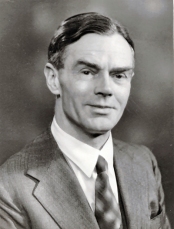
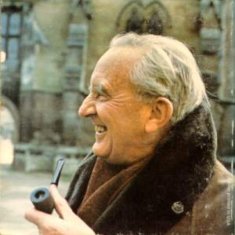
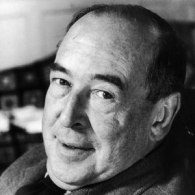
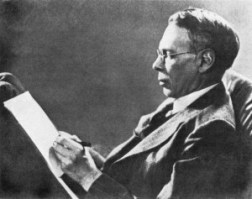

This looks very comprehensive – though I don’t see War in Heaven, Williams’ novel about the Grail. I may have more thoughts, will have to search my head and my files!
LikeLike
Oops! I’ve fixed that. Any other suggestions are welcome.
LikeLike
I don’t know if this counts since it is only a passing reference, but Tolkien refers to Arthur in the Foreward to Farmer Giles of Ham:
“What with the love of petty independence on the one hand, and on the other the greed of kings for wider realms, the years were filled with swift alternations of war and peace, of mirth and woe, as historians of the reign of Arthur tell us: a time of unsettled frontiers, when men might rise or fall suddenly, and songwriters had abundant material and eager audiences. Somewhere in those long years, after the days of King Coel maybe, but before Arthur or the Seven Kingdoms of the English . . .”
LikeLike
Thank you! I’ve added it.
LikeLike
Is there a way, without making it ungainly, to note the fact of things like interesting later references in Lewis’s published letters, and scattered Grail and Arthurian references in Williams’s second through fourth volumes of poetry, and lots of unpublished Arthurian ‘things’ (e.g., lectures) and references in his letters?
I think the Malory section in Outlines of Romantic Theology probably deserves separate mention. (But what of the early published essays I quote in my Arthurian Poets volume introduction: is pointing readers to that volume enough, as, if they follow it up they’ll find all those items referred to in it? Similarly, re. the newly (re-)discovered Arthurian poems (etc.?) noted in Grevel’s biography?)
Is the sequel-character of Many Dimensions worth mentioning, in mentioning War in Heaven? (Is possible play with Wolfram’s Grail “Stone” in that sequel getting too abstruse and speculative to mention?)
If you are noting anthology-appearances of published poems, what Norman Nicholson reprints from Taliessin through Logres in An Anthology of Religious Verse Designed for the Times (Penguin, 1942) deserves inclusion.
Glenn Cavaliero’s publication of C.W.’s notes for Lewis about Taliessin through Logres.
LikeLike
Ach, weh!: Glen.
LikeLike
Thanks; I’m working on adding those.
Um… I’ve re-read your introduction, and I don’t see the essays to which you refer?
Where did Glen Cavaliero publish those notes?
LikeLike
Notes 35 & 36 (p. 294: note typo! – first “36”> 35!) to page 11.
Glen Cavaliero in Gnomon (Fall 1965), number 1. (I am not sure where I can most quickly and conveniently find the exact title and page numbers: my copy – and relevant related papers – are not immediately accessible. But ask around: I’ve been discussing the possiblility with some Williams Soc. folk of getting it online, though I have not tried to contact Glen Cavaliero directly, yet. It is sadly not widely known, but I would not be surprised if various Williams scholars and afcionados have a copy!)
LikeLike
Oops! I misremembered it not being in Lois Glenn’s Checklist, whereas it is: “Charles Williams on Taliessin through Logres”, Gnomon 1 (Fall 1965), 37-45.
LikeLiked by 1 person
Thank you!!
LikeLike
Hm, I can’t seem to find it in an online database. I’ll keep looking…
LikeLike
Is Robin Milford’s broadcast (but never published as sheet music) major setting of parts of C.W.’s late Arthurian poetry getting too far afield?
LikeLike
A bit!
LikeLike
Yep! For the sufficiently specialized scholar, a comparison of Barfield’s Eurythmic Quest and Milford’s formal, fixed ‘Masque’ setting of C.W.’s Arthurian poetry might prove interesting…
LikeLike
Here is another reference in Tolkien’s other writings. The White Dragon in the moon in the children’s story Roverandom is the White Dragon who fought the Red Dragon in the Merlin legends:
“He fought the Red Dragon in Caerdragon in Merlin’s time, as you will find in all the more up-to-date history books; after which the other dragon was Very Red. Later he did lots more damage in the Three Islands, and went to live on the top of Snowdon for a time. People did not bother to climb up while that lasted — except for one man, and the dragon caught him drinking out of a bottle. That man finished in such a hurry that he left the bottle on the top, and his example has been followed by many people since. A long time since, and not until the dragon had flown off to Gwynfa, some time after King Arthur’s disappearance, at a time when dragons’ tails were esteemed a great delicacy by the Saxon Kings.”
LikeLiked by 1 person
Thank you so much! I’ve added that. That’s delightful. 🙂
LikeLike
What of the Arthurian references in The Notion Club Papers (HME 9, Index II: “Arthur, King” six page refs., and, e.g., “Camelot” – and consider all the “Avallon”-related entries and their references)?
LikeLike
Duly noted!
LikeLike
I just finished The Notion Club Papers for the first time (nothing like 23 years of lag…) and encountered the name of Arthurian resonance, Geraint (“of West Wales”, i.e., a Cornishman) sailing west with Aelfwine, Treowine, and Ceola, around AD 914 in one plot sketch (p. 279). And, for another, Glastonbury “where there was rumour of strange comers out of the sea in days of old” as Aelfwine’s immediate ancestral home (p. 271). Neither, however, is given any explicit Arthurian connection. Again, the1955 published version of the St. Brendon poem, “Imram”, has an island with a dale “like a silver grail” (line 65: p. 297) – once more without further explicit Arthurian reference.
LikeLike
I suppose one could relate the “grail” island (in its earlier version “As a green cup […] / that with wine the white sun fills / was the land we found”: ll. 69-71, p. 263) to Avallon (e.g., p. 290, n, 63) as Carbonek is related to Sarras in C.W.’s late poetry, but only rather speculatively!
LikeLike
Tolkien mentions Arthur three times in “On Fairy-stories”- first when defining fairy-story, then in the bit about Arthur and others boiling in the ‘stew of stories’, finally in the list of stories he liked in his youth (adventure stories, Arthuriana, “the Nameless North”). Hope it helps!
LikeLike
Wonderful! Thank you a thousand times! (if you want to tell me your name, I will mention you in my acknowledgements).
LikeLike
How would one get hold of Milford’s settings? They could easily be copied and published – and a recording would be wonderful.
LikeLike
They are in the Bodleian: I’ve looked through them, but I’m not a good enough sight-reader to hear by looking (nor could I judge completeness of parts) – I’ve been trying to get real musicians interested, ever since, but don’t have connections. I have, in fact, been in touch with some folk at The Robin Milford Trust, but did not follow up properly…
In their online list of works it appears as:
The Summer Stars Op. 102 (a masque, 1946-57)
Here’s their homepage:
http://www.robinmilfordtrust.org.uk/
I’m not sure how best to negotiate their website: e.g., I got onto this bit separately:
http://www.robinmilfordtrust.org.uk/recordings.htm
LikeLike
A reply with links is in moderation…
LikeLike
There it is, above (15:30) – thanks!
LikeLike
Another Tolkien ref.: In Sauron Defeated Part I, ch. IX, , Christopher provides more of Tolkien’s 1951 letter to Waldman, not in the excerpt(s) in Letters No. 151: “To Bilbo and Frodo the special grace is granted to go with the Elves they loved – an Arthurian ending, in which it is, of course, not made explicit whether this is an ‘allegory’ of death, or a mode of healing and restoration leading to a return.”
LikeLiked by 1 person
Got it.
LikeLike
I pointed out what I believe to be a very brief Arthurian allusion in _The Silmarillion_ a while back (in a note published in _Lamp-Post_), but Jason Fisher pointed out several problems with what I’d written–and I haven’t found time to revise it yet. RealSoonNow, as they say.
LikeLike
Do you still think it is an Arthurian allusion?
LikeLike